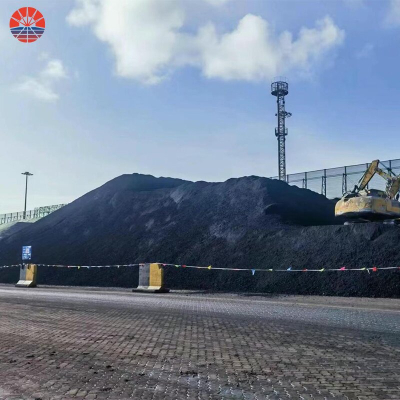Latest Information On Graphitized Petroleum Coke
Graphitized petroleum coke is a high-quality carbon material produced by heating and graphitizing petroleum coke, a by-product obtained from oil refineries or coking units. The graphitization process involves the removal of impurities and the transformation of amorphous carbon into graphite, which improves its electrical conductivity and other properties. Here's an overview of the production process of graphitized petroleum coke:
Raw Material Preparation: The first step is to obtain high-quality petroleum coke as the raw material. Petroleum coke is a solid carbonaceous residue derived from petroleum refining or cracking processes. It is typically produced as a by-product in oil refineries or obtained from specialized coking units. The petroleum coke selected for graphitization should have low sulfur and metal content to ensure the production of high-quality graphitized coke.
Crushing and Sizing: The petroleum coke is crushed into smaller particles to increase its surface area, allowing for better heat transfer during the subsequent heat treatment process. The crushed coke is then screened and sized to ensure uniformity in the feedstock.
Calcination: The crushed and sized petroleum coke is subjected to a calcination process in a rotary kiln or vertical shaft kiln. Calcination involves heating the coke at high temperatures (typically around 1200 to 1400 degrees Celsius) in the absence of oxygen. This step removes volatile components, such as moisture and hydrocarbons, and transforms the amorphous carbon structure into a more ordered graphite-like structure.
Grinding: After calcination, the coke is cooled and ground to the desired particle size. Grinding helps to further increase the surface area and improve the reactivity of the coke during graphitization.
Graphitization: The ground coke is then subjected to graphitization in a high-temperature furnace. The graphitization process involves heating the coke to extremely high temperatures (typically around 2500 to 3000 degrees Celsius) in the presence of a carbon-rich atmosphere. This allows for the rearrangement of carbon atoms into a highly ordered graphite crystal structure.
Purification: Following graphitization, the graphitized petroleum coke may undergo purification steps to remove any residual impurities. Purification techniques can include acid or alkali treatment, washing, or other chemical processes, depending on the specific requirements of the end application.
Sizing and Packaging: The final step involves sizing the graphitized petroleum coke according to customer specifications. The coke is typically sieved or screened to achieve the desired particle size distribution. It is then packaged and prepared for shipment or storage.
It's important to note that the exact details of the production process may vary depending on the manufacturer and their specific equipment and technologies. The above steps provide a general overview of the typical process involved in producing graphitized petroleum coke.
Advantages of graphitized petroleum coke as a carburizer
Graphitized petroleum coke (GPC) offers several advantages as a carburizer in various applications, especially in steel and iron production. Here are some of the advantages:
High Carbon Content: GPC has a high carbon content, typically exceeding 98%. This high carbon content makes it an efficient and effective carburizer, as it provides a concentrated source of carbon for the desired carburization process. It helps increase the carbon content in the metal being treated, thereby enhancing its strength and hardness.
Low Impurity Content: GPC is processed and purified to have low impurity levels, including sulfur, volatile matter, and metals. The low impurity content ensures that the carburization process is not compromised by unwanted chemical reactions or contaminants. It helps produce cleaner and higher-quality steel or iron products.
Graphitic Structure: GPC possesses a highly ordered graphitic structure due to the graphitization process it undergoes. This graphitic structure enhances its electrical conductivity and thermal stability. It also contributes to improved mechanical properties in the carburized metal, such as increased wear resistance and reduced brittleness.
Consistent Performance: GPC offers consistent performance as a carburizer due to its uniform and controlled composition. Its homogeneous carbon distribution ensures consistent carbonization results in the treated metal, allowing for predictable and reliable outcomes. This consistency is crucial in maintaining the desired properties and quality of the final product.
Customizable Carbon Content: GPC can be blended or mixed with other carbonaceous materials to achieve specific carbon content requirements. This flexibility allows for customization based on the desired carbon level and specific application needs. It provides versatility in carburization processes, accommodating various steel or iron grades and applications.
Cost-effectiveness: GPC is generally cost-effective compared to other carbonaceous materials used as carburizers. Its availability and competitive pricing make it an economical choice for many steel and iron producers. Its efficient carbon transfer properties also contribute to cost savings by minimizing carbon losses during the carburization process.
Overall, the advantages of graphitized petroleum coke as a carburizer lie in its high carbon content, low impurity levels, graphitic structure, consistent performance, customizability, and cost-effectiveness. These qualities make it a preferred choice for achieving optimal carburization results in steel and iron production processes.














